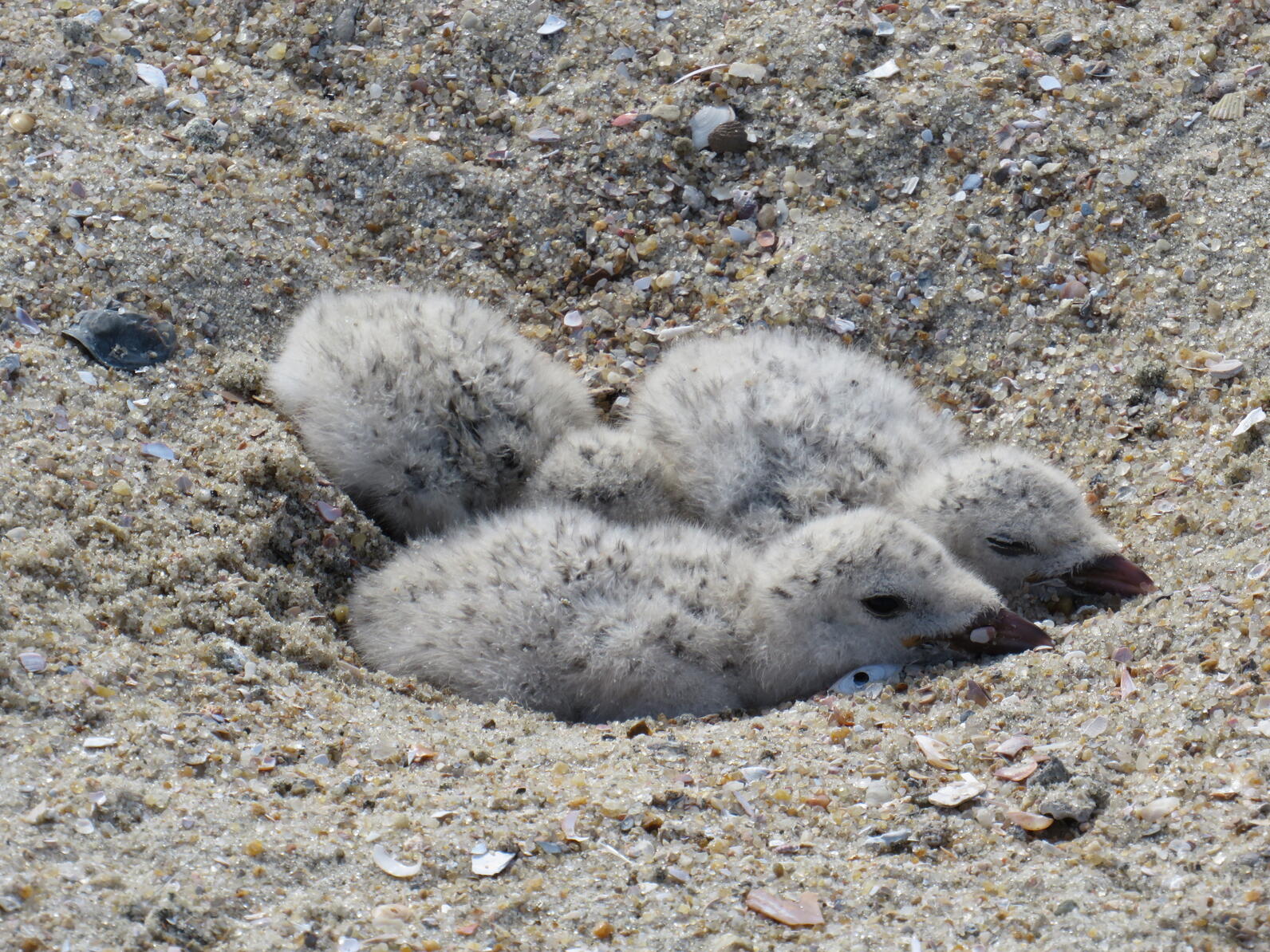Nesting birds returned to Ferry Slip Island just weeks after a major restoration project wrapped up this spring, and now those birds are hatching and fledging chicks.
A pair of Black Skimmers has taken up residence on a restored portion of the island, the first skimmers to nest on the Cape Fear River in over a decade. They laid three eggs, and all three hatched this month.
“It’s amazing how quickly birds will return and thrive when they have the habitat they need,” said Lindsay Addison, Coastal Biologist at Audubon North Carolina. “The island has grown significantly since our restoration project this spring, and the fresh sand is ideal for skimmers and all kinds of nesting birds.”
Ferry Slip Island had been eroding away, shrinking from five acres a decade ago down to three. This spring, Audubon partnered with the U.S. Army Corps of Engineers to pump 80,000 cubic yards of dredged sand onto the island, increasing its size to nearly 7 acres.

The project is providing the kind of sandy habitat that beach-nesting birds like skimmers need to raise their young. The fresh sand also keeps vegetation from growing up and overtaking the open beach.
The pair now nesting on Ferry Slip aren’t far from home. Audubon biologists watched one member of the pair hatch at the south end of Wrightsville Beach three years ago and banded it as part of our ongoing monitoring and research work. After spending winters in Georgia and northeast Florida, Black 95 (its unique band code), stopped in at the Wrightsville Beach colony before settling on Ferry Slip just about 15 miles to the south.
Oystercatchers Get More Elbow Room
American Oystercatchers have also returned to Ferry Slip. Thirteen pairs established nests this spring. Thus far, six chicks have fledged, meaning they are now able to fly, though their parents will continue to help them forage for another few months.
Unlike skimmers and many tern and gull species, oystercatchers aren’t colonial nesters and don’t congregate in large groups. The added space on the island means there is room for more oystercatchers to spread out and nest.
The Cape Fear River is one of the most important places for oystercatchers in the state. The network of sanctuaries on the river that Audubon manages is home to about 100 pairs most years, accounting for 25 percent of all breeding oystercatchers in North Carolina. As sea levels rise, protecting and restoring their habitat only becomes more important.
Down the river from Ferry Slip Island is South Pelican Island, where Royal and Sandwich Terns have established a large colony this spring and summer, as they have in recent years. With its larger size and fresh layer of sand, Ferry Slip will also be an option for Royal Terns in the coming years. Most years, the two islands are home to one of just six Royal and Sandwich Tern colonies in North Carolina.

Updates around Audubon’s Coastal Sanctuaries
Elsewhere around Audubon’s coastal nesting sanctuary system, many chicks are out of the nest and ready to fledge.
At Lea-Hutaff Island, more than 400 Least Terns have nested. The island also saw its first skimmer colony in several years, but most of the nests failed due to predation.
The south end of Wrightsville Beach has big numbers of skimmers, and chicks are currently begging for food and visible for visitors who want to watch from behind the posted sanctuary border.
In Pamlico Sound, the Beacon Island colony of Brown Pelicans was nearly wiped out by a nor’easter over Mother’s Day in May, but the pelicans returned and are re-nesting.
All told, Audubon North Carolina’s coastal sanctuary system stretches from Pamlico Sound to the Cape Fear River and is home to 40 percent of the state’s coastal nesting waterbirds. Stay tuned for more nesting updates later this year.










